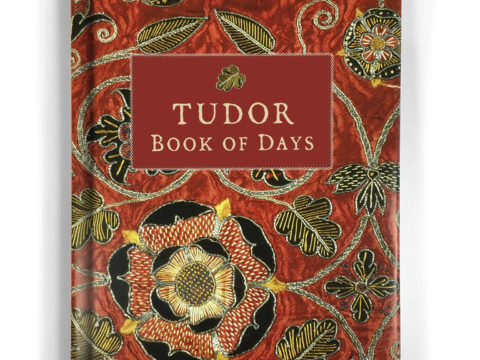Matthew Stuart: Life Story
Chapter 10 : The Assassination of Riccio
The royal marriage was soon in difficulties. Darnley (we will continue to call him thus, but he was officially King Henry) was not content with the title of king and wanted the Crown Matrimonial – this was the custom by which the spouse of a reigning queen might continue to hold the crown in the event of her death. This right had been granted by the Scots Parliament to Mary’s first husband, and Darnley now demanded it. Mary may have promised it to him initially, but she could not grant it of her own power – it required parliamentary sanction. And, if she had been inclined to grant it, she soon changed her mind. Within months of their marriage, she was regretting her choice.
Throughout 1565, support for Mary began to soften – partly because of her marriage, partly because rumours were spreading that she intended to return Scotland to the Catholic faith. There is absolutely no evidence that Mary had any such intention, but it was believed by many. The support of Lennox was not for Mary, but for his son, and he was indignant on Darnley’s behalf that the Crown Matrimonial had not been awarded.
By the end of 1565, Mary was pregnant – good news for her, and, in theory, good news for Lennox. His grandchild would be sovereign of Scotland. Darnley was far more ambivalent – if Mary had a child, his hopes of any real personal power were limited. Mary also made overtures towards a reconciliation with the Hamiltons: Châtelherault (formerly Arran) was pardoned, on condition he remain in exile in France for another five years. This rapprochement with his enemy was a bitter blow to Lennox.
Lennox spent Christmas of 1565 in Glasgow. He then arranged to meet Darnley at Peebles in mid-January. A plot began to coalesce around the men and Darnley’s cousin, Morton. Morton was a long term ally of Moray’s and he now suggested to Darnley that Darnley would have support from both Moray and Queen Elizabeth to wrest authority from the queen.
The time for action was not yet ripe, so Darnley and Lennox were back at the royal court in February, where they made a parade of Catholicism, along with Mary and the other Catholic nobles. Darnley was to be awarded the Order of St Michel – the premier chivalric order of France. What should have been a joyous occasion was marred by arguments as to the arms that Darnley should bear – should they be those of the King of Scots, or those of Lennox quartered with Albany (the title Mary had granted him before marriage)?
Mary left the matter to her council, saying Darnley should have ‘only his due’ which was taken as indicating a lack of enthusiasm on her part for his elevation to the Crown Matrimonial. The occasion was further degraded by a public quarrel between the couple, over his persistent drunkenness and his habit of encouraging others to drink too much. He replied so aggressively that Mary was reduced to tears.
The royal marriage deteriorated: Mary’s secretary, David Riccio, aroused Darnley’s personal jealousy, and the mistrust of many of her nobles, including Lennox. Riccio was Italian, Catholic, and spent far too much time with the queen, a combination of factors that led to wild assumptions that she was over-influenced by him, and that he was her lover.
A plot to murder Riccio was formulated – both Lennox and Darnley were involved, as well as Moray, Morton and the Earl of Ruthven. In London, William Cecil was aware of it, and, in fact, the only people who seem to have been in total ignorance of it were Riccio himself and Mary and her immediate friends.
The murder of Riccio within earshot of the queen by the conspirators is well-known. It does not appear that Lennox was actually present at the assassination, but the following day, whilst Mary was confined to her room, working out her escape strategy whilst pretending to fear an imminent miscarriage, Darnley and his father met with the other conspirators.
The tables had turned – Darnley realised that, far from now being in a commanding position, was effectively the tool of his co-conspirators. He and Lennox were described as ‘in great terror’, realising they were now at the mercy of the ruthless Morton. Darnley grovelled to Mary, saying he had not thought the matter would go so far.
With a courage and a determination that was extraordinary, Queen Mary persuaded her husband to abandon the plotters, deceived them into thinking she would pardon them, and engineered a midnight escape to Dunbar.
Initially unaware that Moray had been involved in the plot, Mary restored him to something like favour, and was now surrounded by his allies, as well as her own ally, the Earl of Bothwell. Lennox was banished from the court, and Morton, Ruthven and the other main conspirators went into exile. As a parting shot, Mary was sent the bond between the conspirators which showed that her husband, contrary to his protestations, had been a prime mover in the plot – and that he had insisted on the murder taking place in her presence, risking her life should the shock bring on a miscarriage - for Mary, this was the ultimate betrayal, and she never forgave it.
Nevertheless, she needed to keep up appearances until her child was born. In July, she had a son, later James VI of Scotland.
Matthew Stuart, 4th Earl of Lennox
Family Tree




